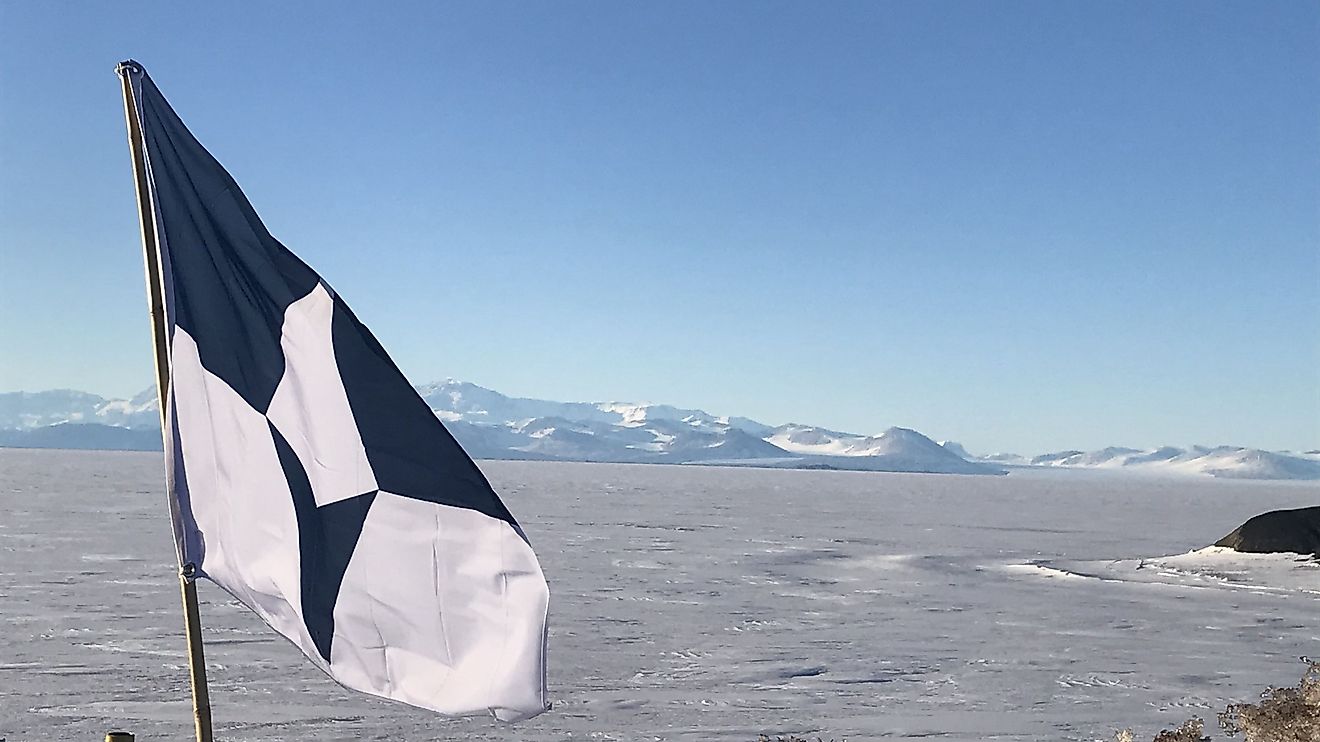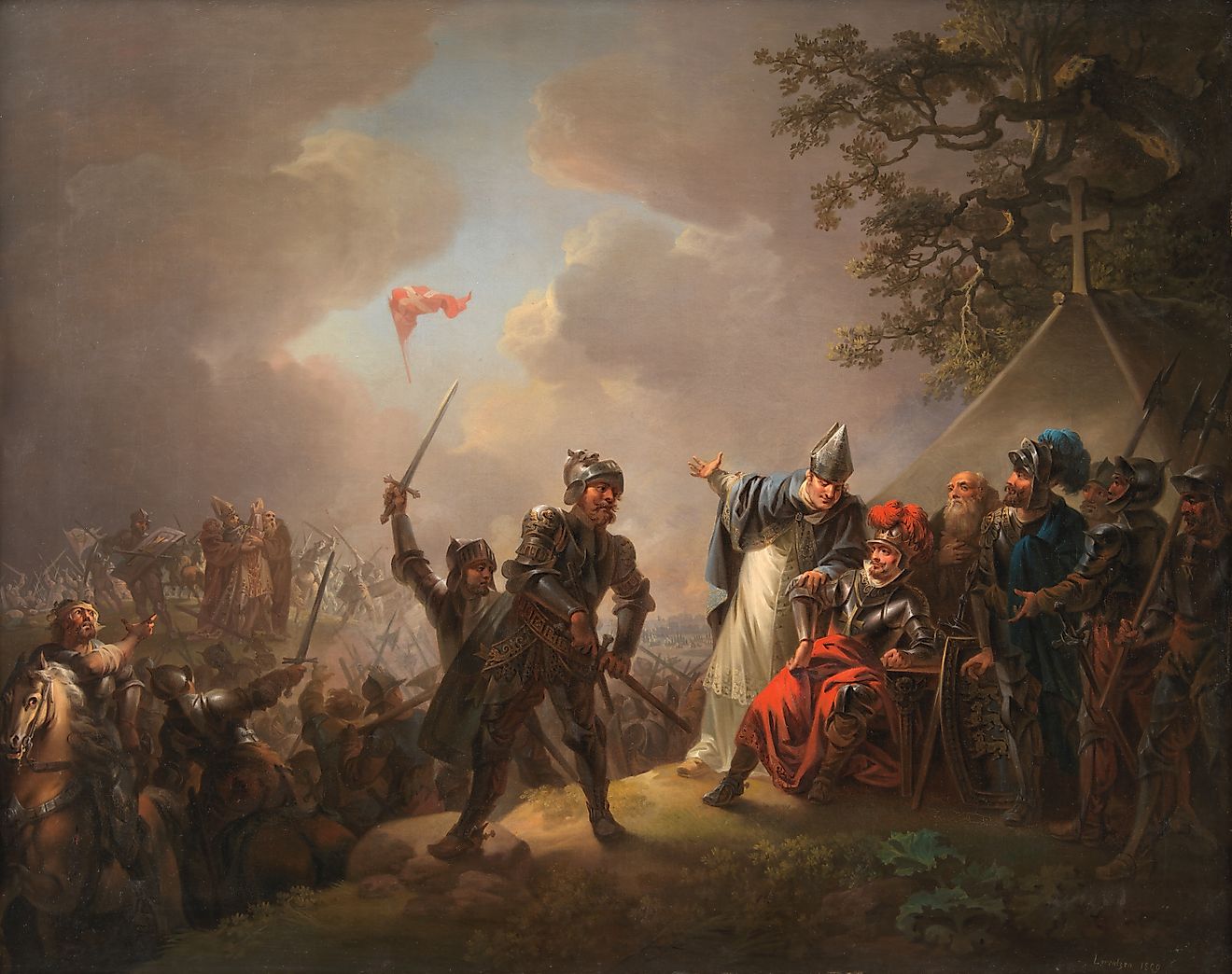
Flags That Resemble The US Flag
The American Flag, also known as ol' Stars and Stripes, is uniquely modular with its iconic red, white, and blue colors symbolizing valor, purity, and loyalty. It features 13 stripes and 13 stars, one for each of the original colonies. In the 1770s, Britain targeted ships with more localized designs, assuming they were pirates, which highlighted the need for a united symbol. By the early 1800s, the United States was expanding beyond the original 13 colonies, and as new states joined, additional stars were incorporated into the flag.
However, the tradition of using regional flags dates back to at least the 11th century BCE in China, with the oldest in-use flag being the Flag of Denmark from the 13th century CE. So, while the USA did not invent or "re-invent the wheel" when it comes to flags, its flag has become highly recognizable, inspiring other countries and provinces with shared history or values. Without further ado, here are six flags that bear a striking resemblance to the US Flag.
Liberia
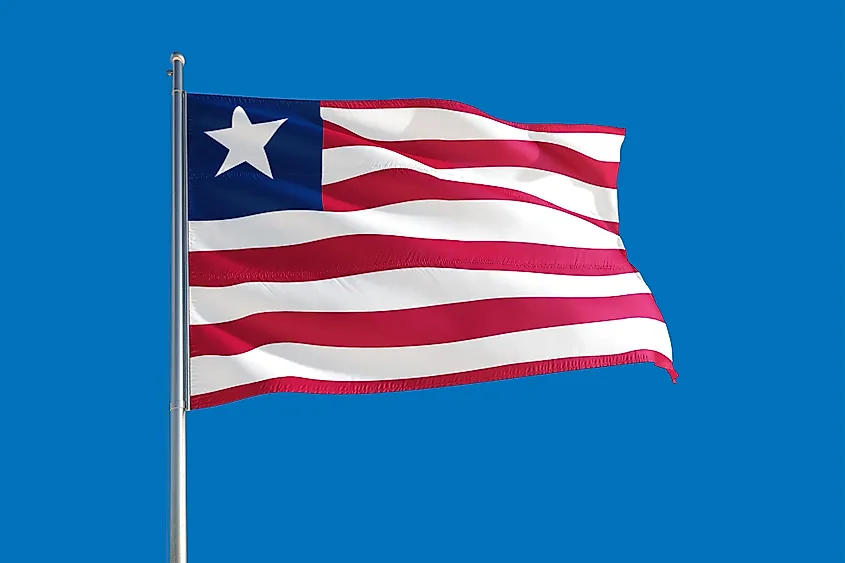
The Flag of Liberia has a unique design that reflects the country's history and its connection with the United States. Officially adopted on July 26, 1847, the Liberian flag features eleven horizontal stripes of alternating red and white, with a blue square in the upper left corner containing a single white five-pointed star.
The design of the Liberian flag bears a strong resemblance to the United States flag, symbolizing the deep historical ties between the two nations. Liberia was founded by formerly enslaved Americans who were transported to Africa by the American Colonization Society in the early 19th century. The return of these formerly enslaved people to their ancestral homeland resulted in the establishment of a new nation, which adopted a flag inspired by their American heritage.
Each element of the flag has a specific significance. The eleven stripes represent the signatories of the Liberian Declaration of Independence, while the red and white colors denote valor and purity, respectively. The blue square stands for the African mainland, and the white star symbolizes the freedom the ex-slaves gained in Liberia.
Cuba
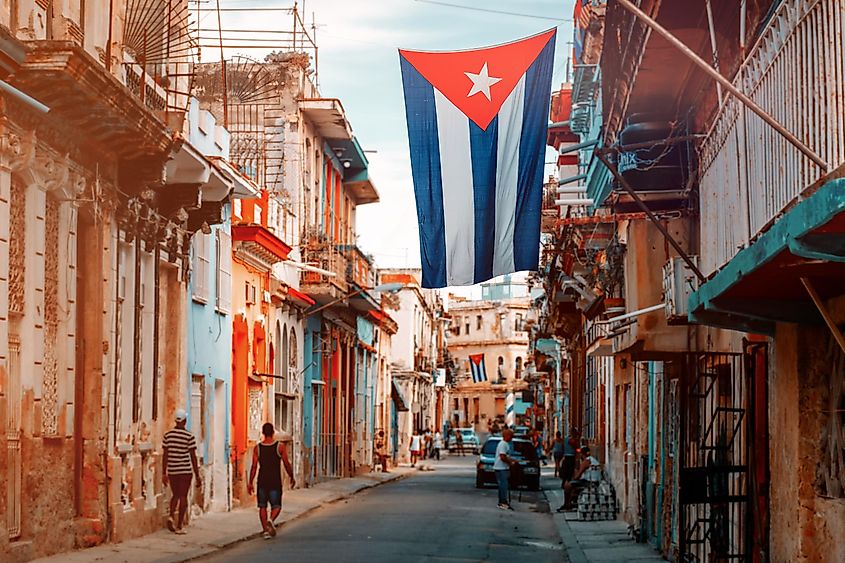
The Flag of Cuba boasts a design that is imbued with the country's quest for independence. The Cuban flag displays five alternating horizontal stripes of blue and white, a red equilateral triangle on the hoist side, and a solitary white five-pointed star at the center of the triangle.
The flag's design dates back to 1849 when Narciso López, a Venezuelan military general fighting for Cuban independence, conceived the idea in collaboration with the Cuban poet Miguel Teurbe Tolón. The three blue stripes represent the three original provinces of Cuba: Western, Central, and Eastern. The two white stripes signify the purity and righteousness of the cause for independence. The red triangle embodies the blood shed by those who fought for freedom, and its shape is a nod to the ideals of liberty, equality, and fraternity from the French Revolution. The white five-pointed star, known as "La Estrella Solitaria" (The Lone Star), symbolizes the absolute freedom and unity of the Cuban people under one independent nation.
Malaysia
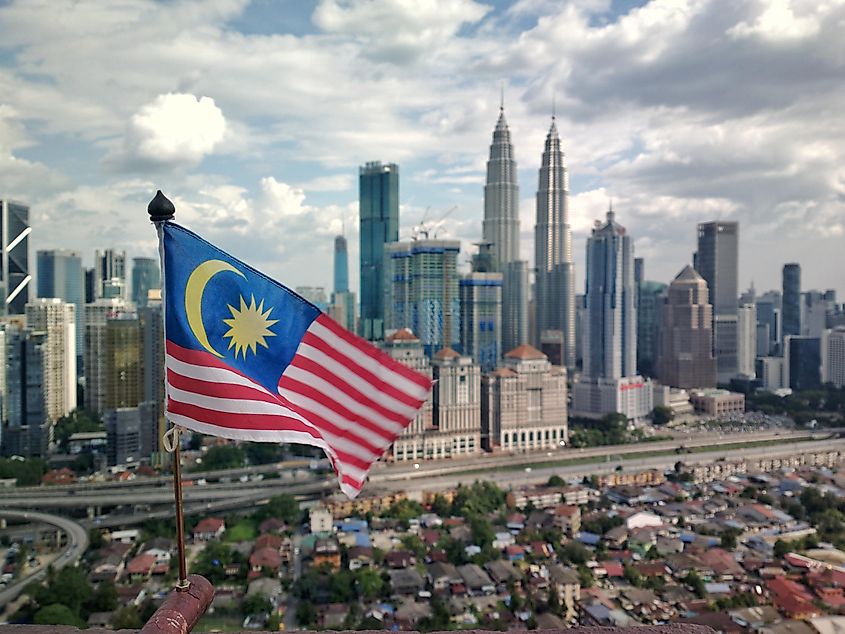
The Flag of Malaysia is also known as the "Jalur Gemilang" or "Stripes of Glory." This flag, which was first hoisted on September 16, 1963, embodies Malaysia's struggle for independence and its aspirations for unity and harmony.
The design of the Malaysian flag is a thoughtful synthesis of symbols, each with a significant meaning. The flag consists of 14 alternating red and white horizontal stripes, which represent the equal status of the country's 13 states and the federal government. These stripes also symbolize the unity among the diverse Malaysian communities, bound together by a shared history and common aspirations.
A blue canton, occupying the upper left corner of the flag, signifies the unity of the Malaysian people. Within the canton lies a gold, 14-pointed star known as the "Bintang Persekutuan" or "Federal Star." The star's points correspond to the 13 states and the federal government, symbolizing the unity and cooperation within the Malaysian federation. The gold color of the star represents the nation's sovereign dignity.
The crescent moon, also featured in the blue canton, is a nod to Malaysia's official religion, Islam. The crescent symbolizes purity and spirituality, highlighting the importance of faith and moral values in shaping the nation's identity and development.
Brittany
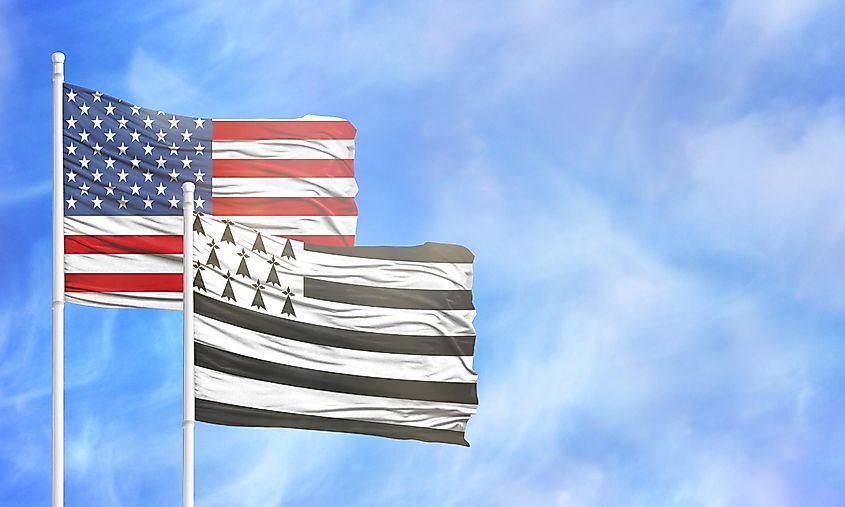
The Gwenn-ha-du, the flag of Brittany, is a striking visual emblem designed to represent the people from this distinctive region in northwestern France. The flag's name, which translates to "white and black" in the Breton language, aptly describes it.
The Gwenn-ha-du is composed of two key elements that work in harmony to represent the heritage and unity of Brittany. The first element is a field of eleven horizontal black and white stripes, symbolizing the historical dioceses of the region. The five black stripes represent the Gallo-speaking areas in eastern Brittany, while the six white stripes signify the Breton-speaking areas in western Brittany. These stripes not only represent the cultural and linguistic diversity of the region but also emphasize the harmonious blend of its two identities.
In the upper left corner of the flag, the second element is featured - a canton of ermine spots, a pattern with historical roots dating back to the 14th century. Ermine, a heraldic symbol representing the stoat's winter fur, was extensively used by the Dukes of Brittany to decorate their coats of arms. The presence of this pattern on the flag underlines the region's noble and proud past, while the nine ermine spots evoke the permanence of the Breton identity.
Chile
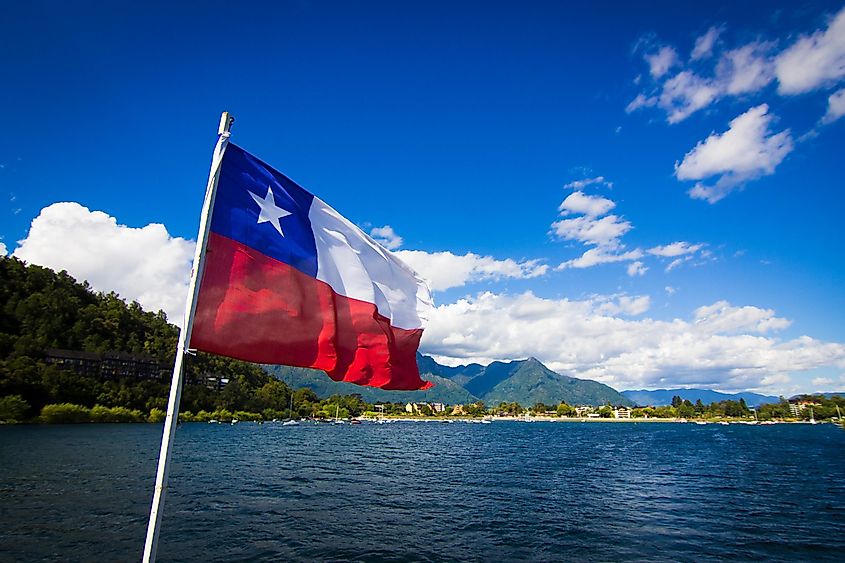
The Flag of Chile, affectionately known as "La Estrella Solitaria" (The Lone Star), is a powerful symbol of national pride and unity for the Chilean people. Officially adopted on October 18, 1817, the flag is steeped in symbolism that has evolved over time. The design, which was initially proposed by José Ignacio Zenteno, Minister of War at the time, consists of two horizontal bands and a blue square in the upper hoist-side corner. The upper band is a vivid white, representing the snow-capped Andes mountains, an iconic feature of the Chilean landscape. The lower band is a bold red, symbolizing the blood shed by the nation's brave heroes who fought for Chile's freedom during the struggle for independence from Spain.
The blue square in the flag's top left corner represents the vast Pacific Ocean that embraces Chile's western coastline, an essential element of the country's geography and economy. At the center of the blue square lies a single white five-pointed star, the "Estrella Solitaria." This solitary star embodies the nation's aspirations for progress, honor, and the guiding principles of liberty and justice.
Puerto Rico
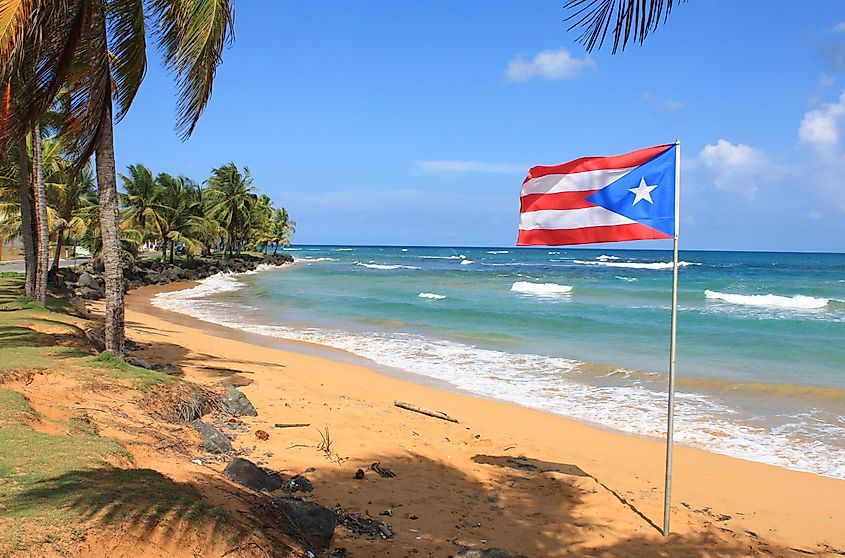
The Flag of Puerto Rico is a fascinating tapestry, weaving together various elements that showcase the island's storied past and strong connections to other nations. Conceived in 1892 by a group of Puerto Rican revolutionaries in New York City, the flag was originally intended as a symbol for their quest for independence from Spain. The design drew inspiration from the Cuban flag, as both islands were seeking to break free from colonial rule. The Puerto Rican flag was officially adopted on December 22, 1895, and its design has remained largely unchanged since then.
The flag consists of five alternating red and white horizontal stripes, with the red symbolizing the blood shed by the Puerto Rican people in their struggle for freedom, and the white representing liberty and human rights. On the left side of the flag, a blue equilateral triangle points towards the center, housing a single white five-pointed star. The triangle symbolizes the three branches of government—executive, legislative, and judicial—while the blue represents the coastal waters and skies surrounding the island. The solitary star in the center embodies the Commonwealth of Puerto Rico, shining brightly as a symbol of unity and self-governance.
Flags serve as potent symbols of national identity and pride, embodying the histories, aspirations, and values of their respective nations. While the American flag has undoubtedly inspired the design of various flags around the world, each flag still retains its distinct characteristics and meanings. These six flags, with their striking resemblance to the Stars and Stripes, remind us of the interconnectedness of our world and the shared principles that unite different nations. As we appreciate the unique stories woven into the fabric of each flag, we gain a deeper understanding of the diverse cultures that make up our global tapestry.
